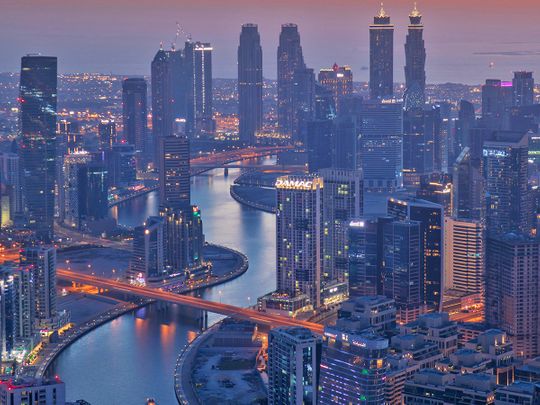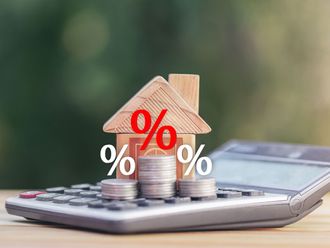
Dubai: UAE businesses and consumers can finally head into Summer with relief – after the ‘one & done’ 0.25 per cent interest rate hike by the US Federal reserve, and matched by the Central Bank in the UAE and its Gulf peers.
But the message from the Fed is what will soothe concerns among UAE and Gulf businesses – that there will be no more of the rate hikes. For now, at least. The announcement comes on the same day as the IMF forecast slower real GDP growth for the Gulf and MENA economies, with concerns escalating that the global economy could finally be in for some hard going.
Businesses – and consumers – will take any break they can get from the succession of interest rate hikes the local market has seen since March 2022, as it moved in lockstep with the Fed.
Plus, the first quarter results put out by the UAE banks (and matched to an extent by their Gulf peers) show their clients had already adjusted to the rate increases of the last 14 months.
“Our business customers have been dealing with and managing the impact of increasing rates for the past 2 years,” said Dhiraj Kunwar, Managing Director of Business Banking at RAKBank. “While it is not ideal for SMEs, the current UAE market also remains stable with opportunities for growth - if acted upon in time.

Customers appear ready to borrow despite increasing rates, as they see the potential for strong returns to be able to service their debt.
“For many of our existing customers who are not looking to borrow and have felt the pinch of increasing rates, we have reviewed these concerns on a case-by-case basis and provided flexible solutions to help manage their liquidity and debt repayments.”
UAE residents are spending on cars, homes
The Q1-23 results also point to higher confidence levels among consumers. They have been spending on new cars and homes going by the loan numbers put out by the big banks during this period. (More residents are getting into the property market for end-user needs, and reflected in the strong demand for mortgages on homes valued at Dh1 million to Dh5 million during Q1-23.)
Which comes as no surprise to Bal Krishen, Chairman and CEO of the Dubai-based Century Financial. “Domestically, the UAE’s fundamentals differ from that of the US, which means that the increase in net loans (during January-March ’23) is propelled by opportunities within the region,” he said. “Rather than simply getting used to the high-rate regime.”

To mitigate clients’ fears of high rates, we introduced flexible and short-term solutions, and without fixing high rates for longer commitment periods. There are attractive deposit products with flexible interest payouts, so that our clients can benefit from rate hikes on a treasury and cashflow management perspective.
Interest rate increases from central banks are slowing and economists continue to flag how we are approaching the end of this hike cycle as we reach an inflection point.
As with all prior interest rate hikes, it gets more costly to borrow and this can rein in spending in favor of saving. The good news is that with interest rate hikes slowing or peaking, borrowing will start to get cheaper, allowing consumers to spend and invest more freely. This in turn will be favourable for not just markets but also for the economy as a whole.
- Justin Varghese, Editor of Your Money
Helping SMEs with their cash needs
UAE banks are working with individuals and companies to provide favourable terms given the higher interest rates resulting from the AED-USD peg. For example,
- If an SME has a deposit of Dh30,000 in the bank and they require a loan of Dh100,000, they are only charged interest on the differential of Dh70,000.
- Restructuring is another popular option SMEs have taken to manage the interest cost. The interest rate remains the same, but with a considerably lesser monthly instalment amount, by extending the tenor to another couple of years.

Businesses that avail this option can systematically put excess cash flow in high-yielding savings schemes and benefit from more wiggle room to effectively plan their spending/investment.
- Sameer Lakhani, Managing Director of Global Capital Partners
Hedge on the dollar?
But UAE businesses still need to be on their guard. The dollar is treading lower, with the Dollar Index now reading 101.07 and well off from the highs earlier in the year. But do not rule out the dollar making a comeback.
This is why 'Unhedged importers who benefited from the surge in the dollar in the early phases of the tightening cycle are likely to now consider locking in future prices in dollar terms," said Zachary Cefaratti, Founder of Dalma Capital. "Or, hedging with forward contracts - as the dollar remains 10-20 per cent overvalued in the short-medium term.
"Fears of stagflationary conditions in the US further dampen the dollar outlook in the medium-to-long term, as the combination of weak growth, persistent inflation and limited scope for effective policy intervention would be a recipe for further deprecation to fair value.

Eventually, importers would be expected to pass rising foreign exchange costs on to customers, which could stoke domestic goods inflation further.
If this projection bears out, inflation and all the attendant pressures will continue to be factored in by UAE businesses, especially those relying on imports. And even on exports, because the dollar peg means UAE-made products could turn to be costlier.
For now, though, it will be all relief - there's nothing like knowing there will not be another hike to cost of operations soon. After 10 rate hikes in 14 months, that's something.
The Fed has now failed again, making another mistake, this latest interest rate hike, which could push the world’s largest economy not only into a short-term but a longer-term recession.
Clearly, this would not only be a huge issue for the US, but the global economy too.”
- Nigel Green of deVere Group











